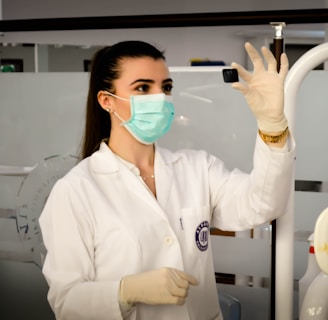Unveiling the Link Between Lifestyle Choices and Varicose Veins: Tips for Healthier Veins and Skin
Twisting, protruding veins that frequently show up on the legs are known as varicose veins, and they can indicate both underlying health problems and cosmetic concerns.
BEAUTYHEALTH
Malik HS
2/19/20242 min read


Unveiling the Link Between Lifestyle Choices and Varicose Veins: Tips for Healthier Veins and Skin
Introduction:
Twisting, protruding veins that frequently show up on the legs are known as varicose veins, and they can indicate both underlying health problems and cosmetic concerns. Although age and heredity are major factors in their growth, lifestyle decisions can also affect how they look and progress. This blog post will discuss the relationship between varicose veins and lifestyle choices, as well as offer helpful advice for preserving youthful-looking skin and supporting vein health.
Understanding Varicose Veins:
When vein valves weaken or malfunction, blood pools in the veins, causing the veins to expand and show through the skin, leading to varicose veins. Their development can be influenced by variables like heredity, age, gender, pregnancy, and extended periods of sitting or standing. But lifestyle decisions can make their symptoms worse or better.
The Role of Diet:
Overall vascular health can be supported by eating a balanced diet high in fruits, vegetables, whole grains, and lean proteins. Certain foods may help lessen inflammation and enhance blood circulation. Examples of these foods include those that are strong in antioxidants (berries, citrus fruits, leafy greens), as well as those that have anti-inflammatory qualities (fatty fish, nuts, olive oil). Furthermore, keeping a healthy weight can lessen vein pressure and lower the chance of developing varicose veins.
Exercise and Varicose Veins:
Engaging in regular physical activity is essential for enhancing blood circulation and fortifying the vein-supporting muscles. Walking, swimming, and cycling are examples of low-impact exercises that can increase circulation without overstretching veins. By increasing muscle tone and decreasing blood pooling, strength training exercises—particularly those that focus on the legs—can also aid in improving vein health.
Skincare Practices for Vein Health:
While skincare products by themselves might not be able to stop varicose veins, they can aid with skin look and vein health in general. Regularly moisturizing the skin with hydrating lotions or creams helps preserve skin suppleness and minimize dryness, which in turn helps minimize the appearance of veins. In addition to preventing skin damage, applying sunscreen and avoiding excessive sun exposure help lower the incidence of spider veins, a milder variation of varicose veins.
Other Lifestyle Considerations:
Numerous lifestyle factors, in addition to food, exercise, and skincare practices, can have an impact on vein health. Compression stockings, leg elevation during rest, and avoiding extended periods of sitting or standing can all help to enhance blood flow and reduce vein pressure. Reducing alcohol intake and giving up smoking can also improve general vascular health.
Conclusion:
Although certain people may be more susceptible to varicose veins due to age or genetics, leading a healthy lifestyle can greatly lessen the look and discomfort associated with them. People can preserve beautiful skin for years to come by making thoughtful decisions about their nutrition, exercise, skincare routine, and other lifestyle variables. Recall that minor adjustments made now can result in major gains later on. If you look after your veins, they will look after you.
